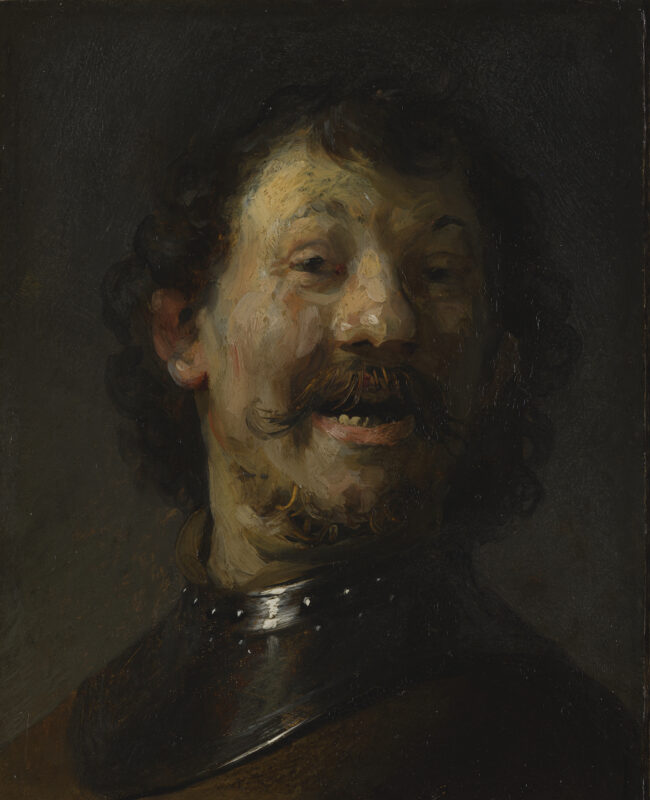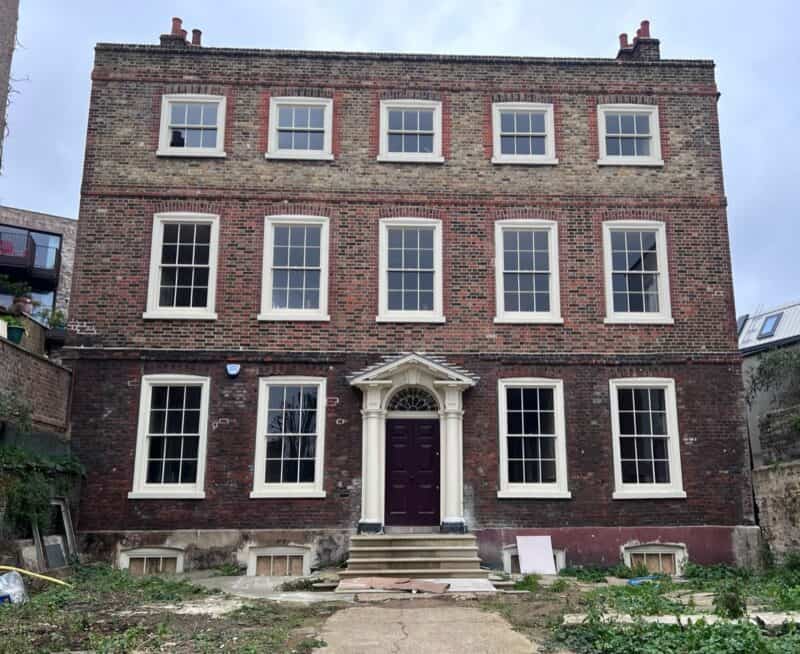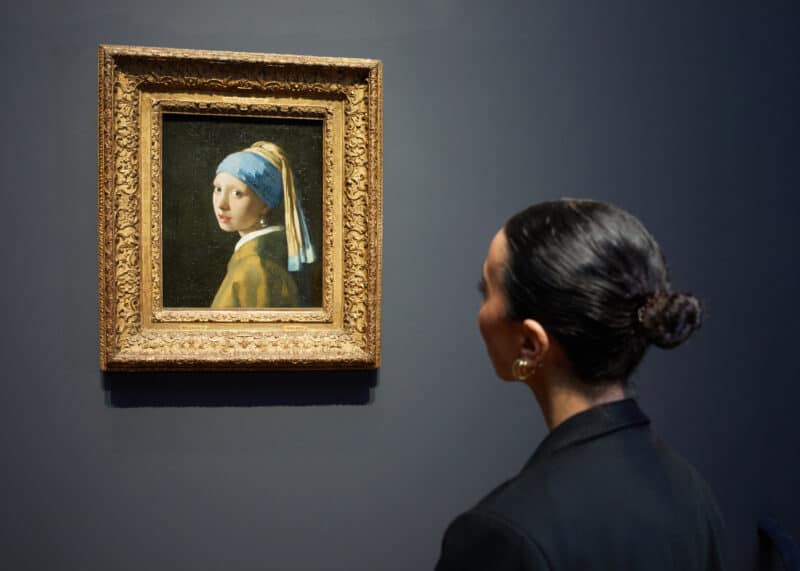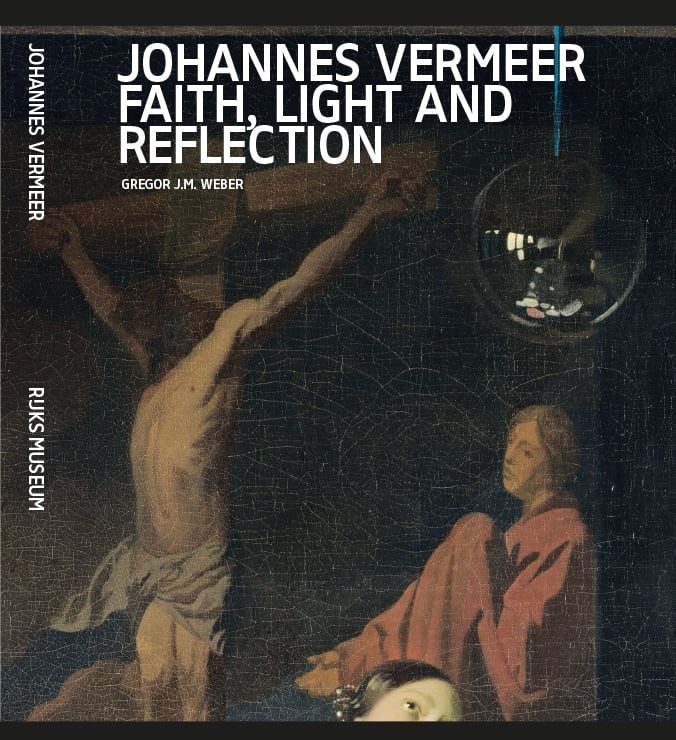
In the lead up to the opening of Rijksmuseum’s landmark Vermeer exhibition on 10th February 2023, a new biography published by Rijksmuseum reveals for the first time the full influence the Jesuit order of the Catholic church exerted on Johannes Vermeer who had been raised a Protestant. Johannes Vermeer. Faith, Light, and Reflection is written by Gregor J.M. Weber, Head of the Department of Fine Arts at the Rijksmuseum and one of the curators of the upcoming exhibition.
The biography’s new findings overturn conventional understanding of Johannes Vermeer (1632-1675) and his work:
Vermeer and the Camera Obscura
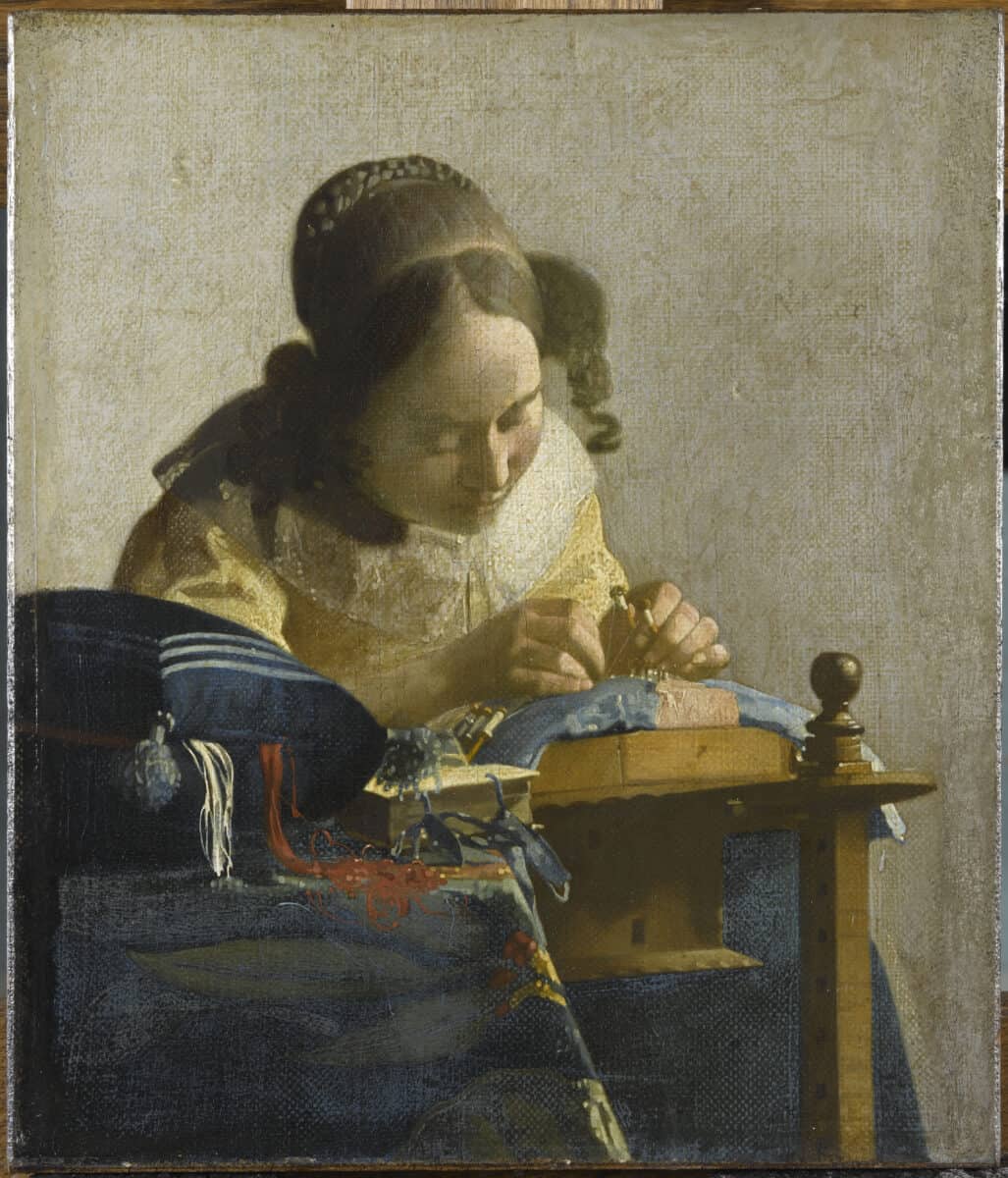
Vermeer quite possibly first came into contact with the Jesuits in connection with the camera obscura. Weber discovered a drawing by the priest of the next door church, Isaac van der Mye, who was also a trained artist, that clearly reflects the characteristics of a camera obscura. Lighting effects which are particular to the camera can also be found in Vermeer’s paintings, leaving little room for doubt that the artist drew inspiration from the device. Our human eye automatically focuses on whatever we are looking at, but the image produced by a camera has just a single focus, leaving other areas blurred. This effect is precisely what Vermeer achieves in The Lacemaker (c. 1666-68, Louvre Museum, Paris), in which all objects in the foreground are blurred. Light and optics were a major focus of Jesuit devotional literature: the order regarded the camera obscura as a tool for the observation of God’s divine light. There is even a sermon that explores in detail the artistic and moral aspects of the camera obscura.
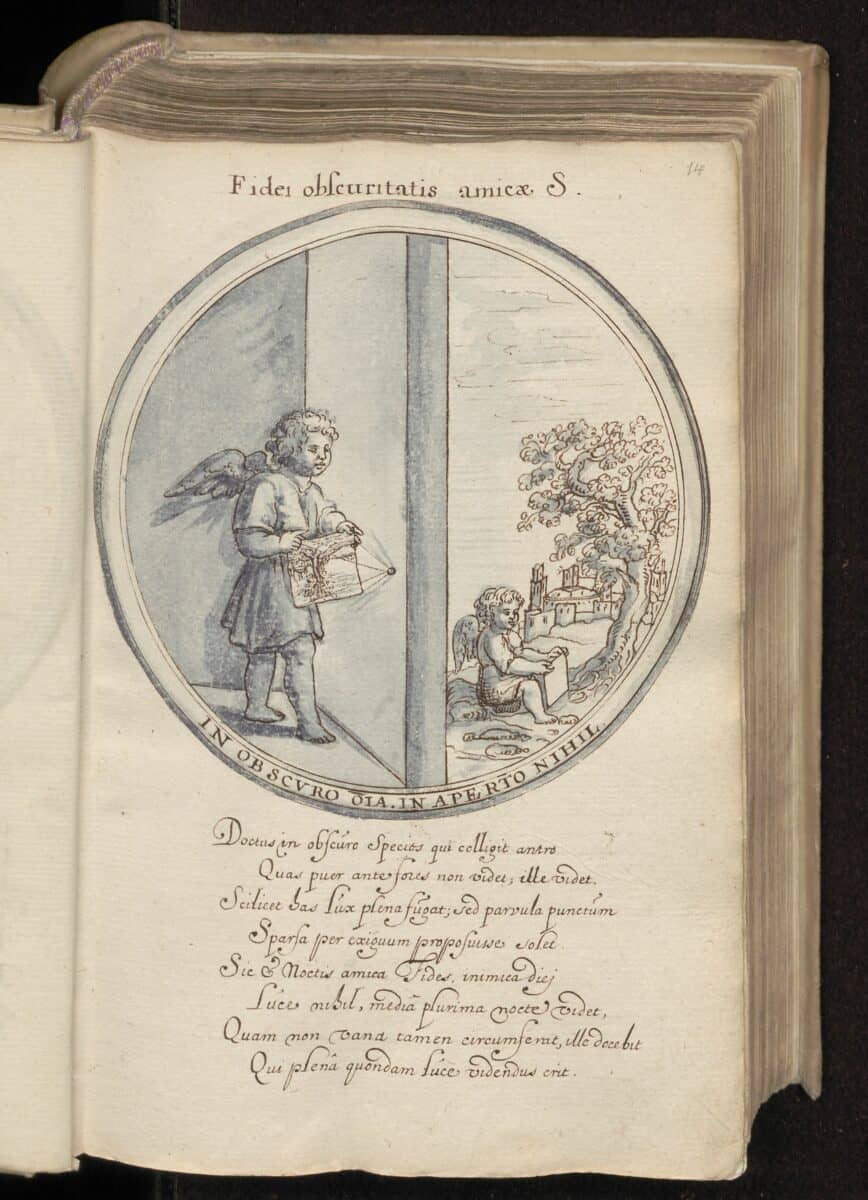
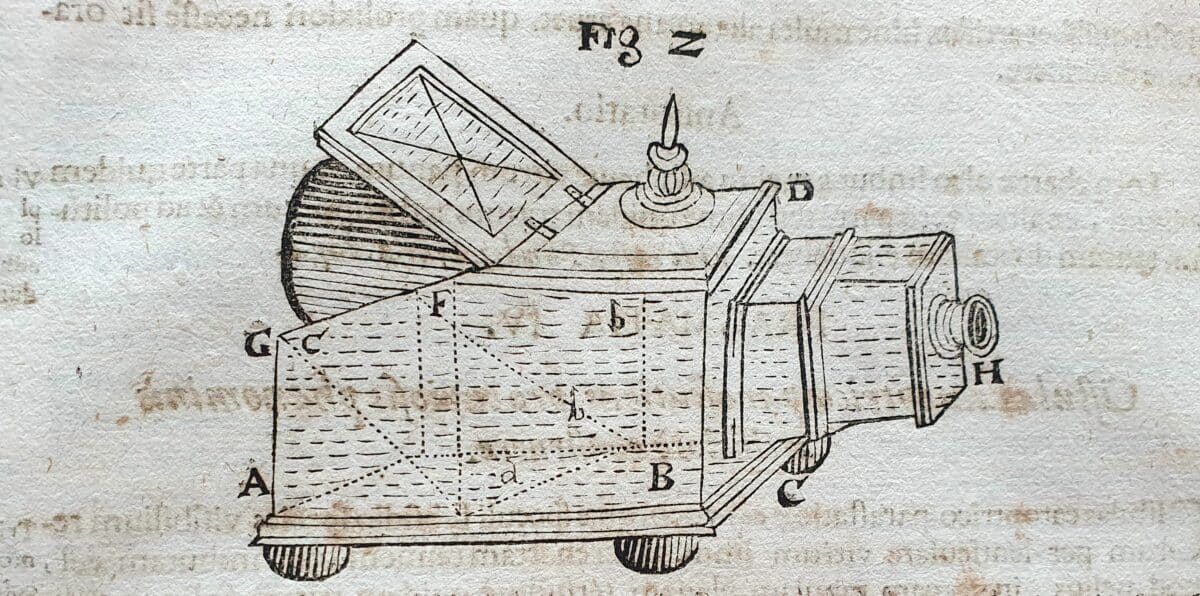
The Jesuits Next Door
The Vermeer family’s home stood on Oude Langendijk in the Papenhoek neighbourhood of Delft. All 15 children – four of whom died young – were raised Catholic. The baptismal names of 10 children were known. They include Franciscus and Ignatius – the latter having been named after the founder of the Jesuits, Ignatius of Loyola. The building next door to their home was a Jesuit mission with a hidden church large enough for 700 faithful, as well as a girl’s school where Vermeer’s daughters were baptised and educated. We can safely assume that Vermeer and his family visited the mission frequently.
Catholic domestic life
The property inventory drawn up after Vermeer’s death reveals that he aspired to lead a Catholic domestic lifestyle. On the wall of one room at his home – which he shared with his Catholic wife, mother-in-law, and large brood of children – hung a large painting depicting the crucifixion of Christ, alongside another of Saint Veronica with the cloth she used to wipe the sweat and blood from the face of Jesus. Devotional art of this kind is typical of a Catholic prayer room. The setting for Vermeer’s Allegory of the Catholic Faith is a domestic room with a large painting of the crucifixion on the wall. Hanging from the ceiling is a reflective glass sphere, a Jesuit symbol for faith. Vermeer was clearly thoroughly acquainted with Jesuit devotional literature.
Jesuit themes

Besides Allegory of the Catholic Faith, various paintings by Vermeer incorporated Jesuit themes in everyday scenes. Hanging on the rear wall in Woman Holding a Balance (c. 1662-64 National Gallery of Art, Washington), for exampleis a version of the Last Judgement, depicting the judgement of the souls of everyone who has ever lived. This approach to combining the mundane and divine spheres is typical of Jesuit spiritual literature.
Vermeer in close-up
A team of Rijksmuseum curators, restorers and scientists is using the latest technology to study Vermeer’s paintings. They are working in close collaboration with the Mauritshuis in The Hague and the University of Antwerp. So little is known about the artist, that he has come to be known as ‘the Sphinx of Delft’. His known body of work is also relatively small, at just 37 paintings. This exhibition brings us closer to Vermeer by presenting 28 of these works together for the first time and placing them in the context of new insights gained from all the research that has been conducted into his work and life.
About Gregor J.M. Weber
Gregor J.M. Weber studied art history in Aachen and Utrecht. His 1987 PhD dissertation concerned 17th-century Dutch art theory. From 1994 onwards, he held various positions at the Gemäldegalerie Alte Meister in Dresden, Germany, including Curator of Italian Paintings. He is also the former director of the Gemäldegalerie in Kassel. Weber was appointed head of the Rijksmuseum’s Department of Fine Arts in 2009. The University of Bamberg awarded him an honorary professorship in 2005. His academic publications concern art theory, iconography and the stylistic analysis of the art of northern and southern Europe. He has also written about Johannes Vermeer and his use of light and paintings-in-paintings. In 2013, he wrote a monograph for the Rijksmuseum on Vermeer’s Woman in Blue Reading a Letter (c. 1662-64 Rijksmuseum). Weber has been involved in many exhibitions, including Late Rembrandt (2015) and Rembrandt & Velázquez (2019) at the Rijksmuseum. The Vermeer exhibition brings Gregor Weber’s career at the Rijksmuseum to a close.
Biography; Johannes Vermeer. Faith, Light and Reflection, Author: Gregor J.M. Weber, Design: Irma Boom Publisher: Rijksmuseum ISBN 9789462087583 Set for release next week January 2023
Vermeer , 10th February – 4th June 2023 The Rijksmuseum

